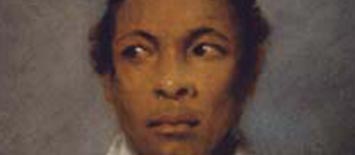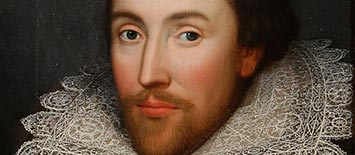LAURENCE OLIVIER AS THE MOOR IN 'OTHELLO' - 1965
Is William Shakespeare's Othello Really Black? What Is The Moor's True Ethnicity & Race Background?
IS WILLIAM SHAKESPEARE'S Othello really black? The answer may seem obvious, but the Moor's race background and ethnicity is disputed by some Shakespearean scholars. By Ben Arogundade. [Jun.03.2016]
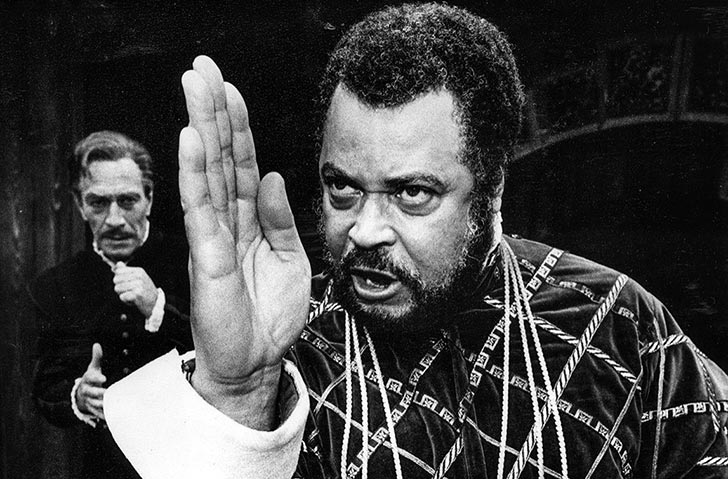
THE ETHNICITY OF WILLIAM SHAKESPEARE'S character, Othello is still debated amongst some Shakespeareans. The answer may seem obvious, but is it? The differences of opinion centre around exactly what the Bard intended by his use of the term “Moor” in describing his character’s ethnicity and racial identity. The word is believed to have originated from the Greek term mauros, which means black. It was first used to describe the natives of Mauretania — the region of North Africa which today corresponds to Morocco and Algeria. It was later applied to people of Berber and Arab origin, who conquered and ruled the Iberian Peninsula — the area now known as Spain and Portugal — for nearly eight centuries. From the Middle Ages onwards the Moors were commonly regarded as black Africans, and the word was used alongside the terms “negro”, “Ethiopian” and “Blackamoor” as a racial identifier.
IS OTHELLO BLACK?
With these different interpretations in mind, the question is, what was William Shakespeare’s intent when he wrote Othello in 1603? The apparent ambiguity that surrounds the lead character’s race makes one wonder if it was a deliberate ploy used by Shakespeare to leave things open to theatrical interpretation. This is the same device used by Emily Brontë in Wuthering Heights. The reader is rendered unsure whether the character of Heathcliff is actually black, white or Other. Brontë simply describes him as “a Lascar” (an Indian seaman) and a “dark-skinned gipsy”, leaving the rest to us to interpret.
OTHELLO'S RACE BACKGROUND
In Othello’s case this interpretation varies considerably. E.A.J Honigmann of the Arden Shakespeare edition, suggests that within the Elizabethan consciousness, the term “black”, as applied to Othello, could have meant, not sub-Saharan African, as it means today, but “swarthy”, which conceivably could also have suggested that Othello was a light-skinned Arab. If written today, post-911, one could imagine Shakespeare unequivocally casting the Moor as a bearded Arab Muslim.
OTHELLO THE SPANISH MOOR
Peter Ackroyd, author of Shakespeare – The Biography, is in no doubt about Othello’s race. “It is a mistake to consider Othello to be of African or West Indian origin,” he states. “He was of Moorish stock, olive-skinned, and Shakespeare portrays him as ‘black’ for the purposes of theatrical emphasis and symbolism.”
Ackroyd, who sees Othello as a Spanish Moor, points out that in the period in which Shakespeare was writing the play, he was aware of much that was going on within the politics of Spain. There was a large community of Spanish Moors in London at the time, which the Queen wished to expel. He also notes that two of the plays characters, Roderigo and Iago, have Spanish names. Moreover, despite the contention that the play’s basic plot was based on Geraldi Cinthio’s Hundred Stories, Ackroyd also references a story about Philip II, the King of Spain, who was allegedly of a very jealous nature, and was said to have strangled his wife in bed after she had inadvertently dropped her handkerchief. If this tale is true, it is too close to the plot of Othello to be a coincidence.
OTHELLO THE ARAB
Running parallel to this, Abd el-Ouahed ben Messaoud ben Mohammed Anoun — the olive-skinned Moorish ambassador to the Arab King of Barbary — is often cited as the inspiration for the character of Othello. He visited the court of Queen Elizabeth in 1600, and sat for a portrait. Some suggest that Shakespeare would have met him, or indeed performed one of his plays in his presence.
However, alongside this there is a strong counter-argument for the Moor as a black African, and certainly during Shakespeare’s time, London’s Africans were also a big influence on him. In November 1600, John Leo Africanus’s Geographical History of Africa was published, which Shakespeare is alleged to have read, giving him a perspective on the culture of the continent. At the same time, in the court of Queen Elizabeth, a social gathering called the masque of blackness, was a well established ritual in which the Queen and her ladies-in-waiting would dress up and blacken their faces with make-up to appear as “Ethiopes”. African Christians would also have been a part of Shakespeare’s daily life around St. Helen’s Bishopsgate, Silver Street and Turnmill Street, where he lived and socialised. He would have interacted with them as servants, musicians, entertainers and even prostitutes. He would also have been aware of their struggles within Elizabethan society, and the racism they may have endured.
MOOR MEANS BLACK
There is also some literature from Shakespeare’s time which fixes the meaning of the word “Moor” as black within Elizabethan popular discourse. There are examples of this within the journals of early English travellers. In 1577 Richard Eden wrote of a trip to central Africa, land of “the blacke Moores, called Ethiopians or Negros.” This ethnic identification was also reflected within the English performance tradition of the day. The character of Muly Hamet in George Peele’s The Battle of Alcazar, written around 1590, is referred to as a “Negro Moore”.
This is exactly the time period in which William Shakespeare wrote Titus Andronicus, in which one of his characters — Aaron the Moor — is described as a “thick-lipp’d slave” with a “fleece of woolly hair”. It is difficult to imagine that Shakespeare was describing a Spaniard or an Arab here. By the time the Bard came to write Othello, some fifteen years later, it seems clear what he intended by his use of the word. His text is full of references to Othello’s overt blackness, including references to his “sooty bosom”, and again to the African’s “thick lips”.
OTHELLO BLACK IN AMERICA
From an African American perspective, there is no argument — Othello will forever be a black character. Whether he was a sub-Saharan African, a Berber, an Arab or a Spanish Moor, each variant describes a person of African descent, who is therefore “black”, according to the traditions of America’s “one-drop” rule — the piece of early twentieth century legislation which classified all citizens with any traces of African ancestry as legally “black”.
In terms of the performance tradition, over the centuries, Othello has been portrayed both as an Arab and as an African, although mostly as the latter. Before 1814 all productions featured the Moor as a black African, suggesting that somewhere along the line this precedent was set, perhaps as early as the first performance in London’s Whitehall Palace in November 1604, in which Richard Burbage, principle actor within Shakespeare’s troupe, The King’s men, appeared in blackface in the lead. In fact, The Tragedie of Othello the Moore, an anonymous ballad written around 1625, makes mention of “Dicke Burbidge” in the lead role, as “black” and “swarthie”. If indeed Burbage did play Othello as a black African, then this confirms that Shakespeare saw him as such when he wrote the play.
NEW OTHELLO ETHNICITY
Although the majority of contemporary performances still cast the Moor as a black African, a number of irreverent renditions have mutated beyond black, encompassing a wide range of experimental interpretations that explore multiple racial, ethnic and gender scenarios. In 1990 Michael Gambon played the role as an Arab, while simultaneously the age of the white Othello has emerged, now that Caucasian actors playing the Moor in blackface has been discredited. Three notable productions in recent years have featured Patrick Stewart (1997), Thomas Thieme (2006) and Philip Seymour Hoffman (2009). Stewart’s rendition caused a stir when he was cast in a so-called “photo negative” production in which all the other cast members were black. Even more radically, a performance at Berlin’s Deutsches Theatre in February 2011 veered as far away from the old traditions of race and gender as it was possible to go, when Othello was cast as a white woman, played by German actress Susanne Wolff.
These days, everybody mashes up Shakespeare in their own way. In the case of Othello, this may perennially upset traditionalists who insist that he should be a black African, as Shakespeare originally intended, but the fact is, Shakespeare is a brand that no one owns, and so radical Othellos are inevitable. In the end, it is vital to the perpetual renewal and resonance of Shakespeare’s legacy that his plays continue to mutate in ways he could never have imagined.
Ben Arogundade's book, 'The Shakespeare Mashup', is out now.
OTHELLO & RACE: Is William Shakespeare's character, Othello, black African, Arab or Spanish? James Earl Jones as the Moor in a 1981 performance of the play at the American Shakespeare Theatre.
The Creativity of Author, Designer & Publisher Ben Arogundade
Home
Books
About
Articles
*SHAKESPEARE'S OTHELLO — THE STATS
600
The number of people worldwide who Google the terms, “Is Othello black?”, and “Othello race”, each month.
165,000
The number of people worldwide who Google Othello's name each month.
*All figures for “Shakespeare's Othello - Stats”, supplied by Google. Figures include global totals for laptop and desktop computers and mobile devices.
MORE ABOUT WILLIAM SHAKESPEARE
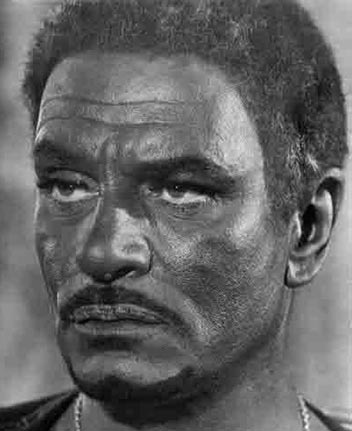

THE MOOR'S MANY FACES: (From the top): Is Shakespeare's Othello black? These renditions suggest that the Moor is everything at once; 'Star Trek' and X-Men star Patrick Stewart played a 'race reversed' white Othello opposite a black Desdemona, Patrice Johnson, in a 1997 production in Washington DC; Anthony Hopkins played Othello as an Arab in a 1981 BBC film version; Sir Laurence Olivier played the Moor in 'blackface' in a controversial 1965 production by Britain's National Theatre; The late Philip Seymour Hoffman was cast as Othello in a 2009 production in New York, with John Ortiz as Iago.

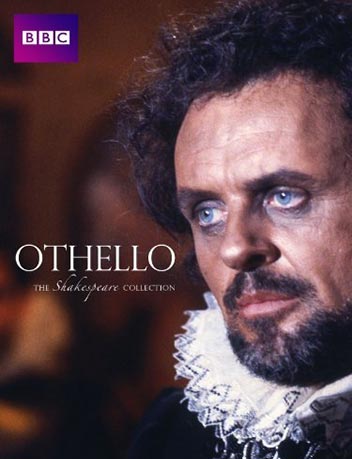
CAUSE OF DEATH
How Did William Shakespeare Die? The 5 Theories.
